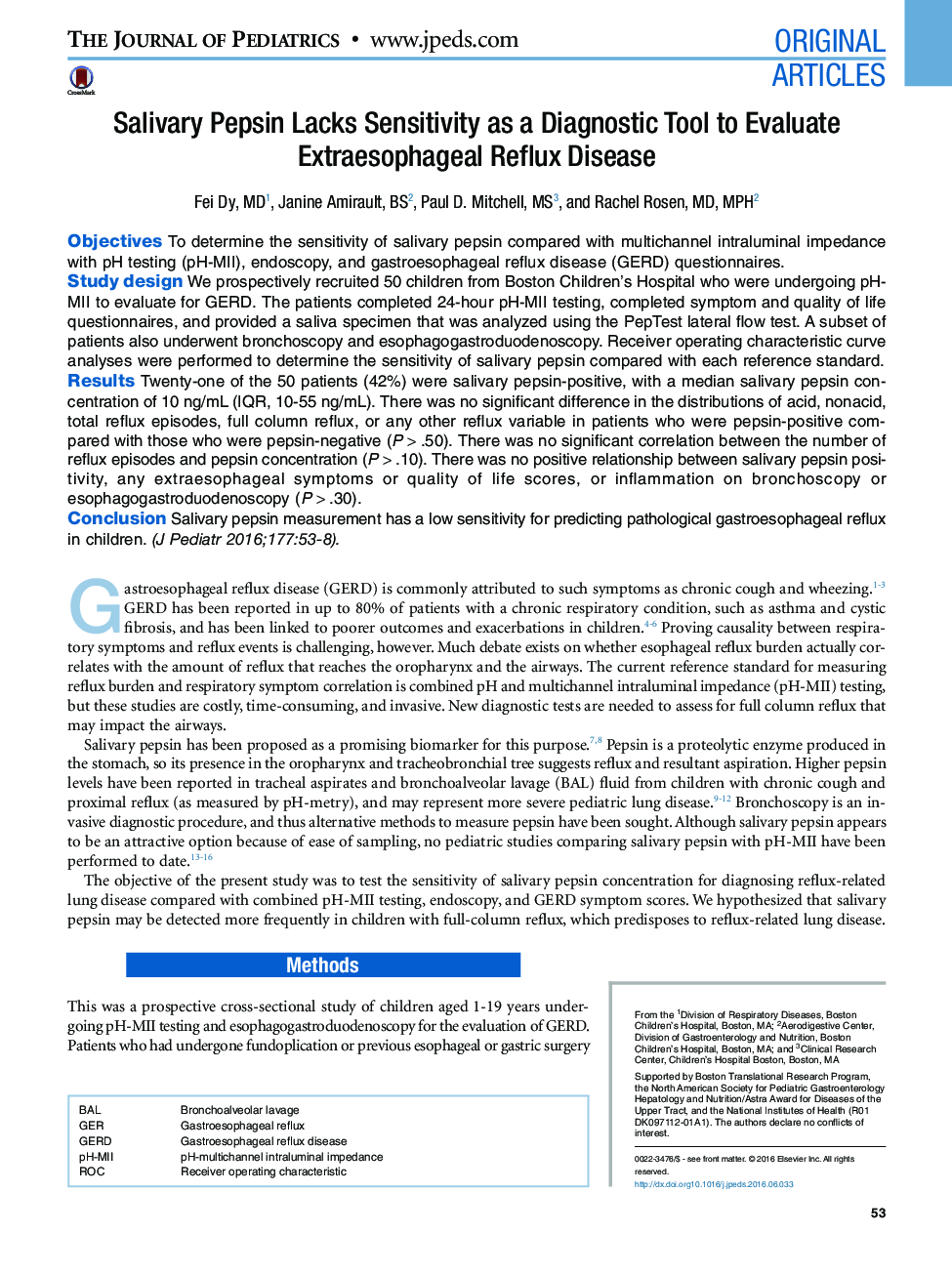| Article ID | Journal | Published Year | Pages | File Type |
|---|---|---|---|---|
| 6218653 | The Journal of Pediatrics | 2016 | 6 Pages |
ObjectivesTo determine the sensitivity of salivary pepsin compared with multichannel intraluminal impedance with pH testing (pH-MII), endoscopy, and gastroesophageal reflux disease (GERD) questionnaires.Study designWe prospectively recruited 50 children from Boston Children's Hospital who were undergoing pH-MII to evaluate for GERD. The patients completed 24-hour pH-MII testing, completed symptom and quality of life questionnaires, and provided a saliva specimen that was analyzed using the PepTest lateral flow test. A subset of patients also underwent bronchoscopy and esophagogastroduodenoscopy. Receiver operating characteristic curve analyses were performed to determine the sensitivity of salivary pepsin compared with each reference standard.ResultsTwenty-one of the 50 patients (42%) were salivary pepsin-positive, with a median salivary pepsin concentration of 10âng/mL (IQR, 10-55 ng/mL). There was no significant difference in the distributions of acid, nonacid, total reflux episodes, full column reflux, or any other reflux variable in patients who were pepsin-positive compared with those who were pepsin-negative (Pâ>â.50). There was no significant correlation between the number of reflux episodes and pepsin concentration (Pâ>â.10). There was no positive relationship between salivary pepsin positivity, any extraesophageal symptoms or quality of life scores, or inflammation on bronchoscopy or esophagogastroduodenoscopy (Pâ>â.30).ConclusionSalivary pepsin measurement has a low sensitivity for predicting pathological gastroesophageal reflux in children.
